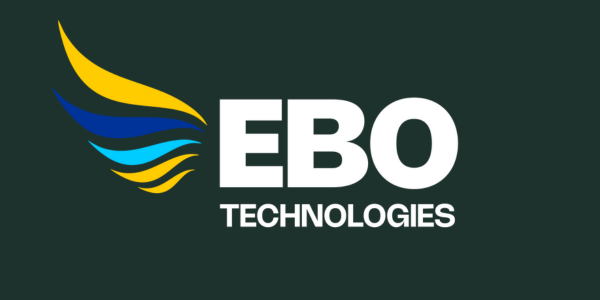Become a Certified Lead Implementer
- Highly interactive ISO 27001:2022 Lead Implementer training taught by industry leaders
- The latest ISO 27001:2022 Lead Implementer course content to help you master ISMS
- Benefit from scenario-based 100% practical learning
- Get post-training support, career guidance and mentorship

Program Highlights
The ISO/IEC 27001 Lead Implementer Training at EarthBlueOne is a comprehensive program that equips professionals with the expertise to implement, manage, and maintain Information Security Management Systems (ISMS) in alignment with the ISO/IEC 27001:2022 standard.
- 32-Hour LIVE Instructor-led Training
- Highly Interactive and Dynamic Sessions
- Career Guidance and Mentorship
- Certified Trainer
- Learn with Real-world Scenarios
- Post Training Support Till Exam
- Telegram Support Group for Exam Practice
- Authorized Training Partner
- Access to Recorded Sessions
ISO/IEC 27001:2022 Lead Implementer Training
-
About Course
-
Learning Outcomes
-
Target Audience
-
Pre-requisites
-
Course Objectives
The ISO 27001 ISMS Lead Implementer Training Course from InfosecTrain is a comprehensive program designed to help participants develop the necessary skills to support organizations in implementing and managing an Information Security Management System (ISMS) based on the ISO/IEC 27001:2022 standard. The course also covers best practices for implementing information security controls from all areas of ISO/IEC 27002. Upon completing the course, participants will thoroughly understand how to identify and mitigate information security risks, develop policies and procedures to ensure compliance with relevant laws and regulations and implement effective security controls to protect against cyber threats.
Introduction to ISO/IEC 27001 and initiation of an ISMS
Section 1: Training course objectives and structure
- Introduction
- General information
- Learning objectives
- Educational approach
- Examination and certification
Section 2: Standards and regulatory frameworks
- What is ISO?
- The ISO/IEC 27000 family of standards
- Advantages of ISO/IEC 27001
Section 3: Information Security Management System (ISMS)
- Definition of a management system
- Management system standards
- Integrated management systems
- Definition of an ISMS
- Process approach
- Overview — Clauses 4 to 10
- Overview — Annex A
Section 4: Fundamental information security concepts and principles
- Information and asset
- Information security
- Availability, confidentiality, and integrity
- Vulnerability, threat, and impact
- Information security risk
- Classification of security controls
Section 5: Initiation of the ISMS implementation
- Define the approach to the ISMS implementation
- Proposed implementation approaches
- Application of the proposed implementation approaches
- Choose a methodological framework to manage the implementation of an ISMS
- Approach and methodology
- Alignment with best practices
Section 6: Understanding the organization and its context
- Mission, objectives, values, and strategies of the organization
- ISMS objectives
- Preliminary scope definition
- Internal and external environment
- Key processes and activities
- Interested parties
- Business requirements
Section 7: ISMS scope
- Boundary of the ISMS
- Organizational boundaries
- Information security boundaries
- Physical boundaries
- ISMS scope statement
Planning the implementation of an ISMS
Section 8: Leadership and project approval
- Business case
- Resource requirements
- ISMS project plan
- ISMS project team
- Management approval
Section 9: Organizational structure
- Organizational structure
- Information security coordinator
- Roles and responsibilities of interested parties
- Roles and responsibilities of key committees
Section 10: Analysis of the existing system
- Determine the current state
- Conduct the gap analysis
- Establish maturity targets
- Publish a gap analysis report
Section 11: Information security policy
- Types of policies
- Policy models
- Information security policy
- Specific security policies
- Management policy approval
- Publication and dissemination
- Training and awareness sessions
- Control, evaluation, and review
Section 12: Risk management
- ISO/IEC 27005
- Risk assessment approach
- Risk assessment methodology
- Risk identification
- Risk estimation
- Risk evaluation
- Risk treatment
- Residual risk
Section 13: Statement of Applicability
- Drafting the Statement of Applicability
- Management approval
- Review and selection of the applicable information security controls
- Justification of selected controls
- Justification of excluded controls
Implementation of an ISMS
Section 14: Documented information management
- Value and types of documented information
- Master list of documented information
- Creation of templates
- Documented information management process
- Implementation of a documented information management system
- Management of records
Section 15: Selection and design of controls
- Organization’s security architecture
- Preparation for the implementation of controls
- Design and description of controls
Section 16: Implementation of controls
- Implementation of security processes and controls
- Introduction of Annex A controls
Section 17: Trends and technologies
- Big data
- The three V’s of big data
- Artificial intelligence
- Machine learning
- Cloud computing
- Outsourced operations
- The impact of new technologies in information security
Section 18: Communication
- Principles of an efficient communication strategy
- Information security communication process
- Establishing communication objectives
- Identifying interested parties
- Planning communication activities
- Performing a communication activity
- Evaluating communication
Section 19: Competence and awareness
- Competence and people development
- Difference between training, awareness, and communication
- Determine competence needs
- Plan the competence development activities
- Define the competence development program type and structure
- Training and awareness programs
- Provide the trainings
- Evaluate the outcome of trainings
Section 20: Security operations management
- Change management planning
- Management of operations
- Resource management
- ISO/IEC 27035-1 and ISO/IEC 27035-2
- ISO/IEC 27032
- Information security incident management policy
- Process and procedure for incident management
- Incident response team
- Incident management security controls
- Forensics process
- Records of information security incidents
- Measure and review of the incident management process
ISMS monitoring, continual improvement, and preparation for the certification audit
Section 21: Monitoring, measurement, analysis, and evaluation
- Determine measurement objectives
- Define what needs to be monitored and measured
- Establish ISMS performance indicators
- Report the results
Section 22: Internal audit
- What is an audit?
- Types of audits
- Create an internal audit program
- Designate a responsible person
- Establish independence, objectivity, and impartiality
- Plan audit activities
- Perform audit activities
- Follow up on nonconformities
Section 23: Management review
- Preparing a management review
- Conducting a management review
- Management review outputs
- Management review follow-up activities
Section 24: Treatment of nonconformities
- Root-cause analysis process
- Root-cause analysis tools
- Corrective action procedure
- Preventive action procedure
Section 25: Continual improvement
- Continual monitoring process
- Maintenance and improvement of the ISMS
- Continual update of the documented information
- Documentation of the improvements
Section 26: Preparing for the certification audit
- Selecting the certification body
- Preparing for the certification audit
- Stage 1 audit
- Stage 2 audit
- Follow-up audit
- Certification decision
Section 27: Practical Approach of ISMS Implementation
- Planning for ISMS Implementation
- Gap Assessment
- Risk Assessment
- Risk Treatment
- Creating Statement of Applicability
- Internal Audit Process
- Management Review
- Documentation
Section 28: Preparation for Exam and Interview
- Project managers and consultants involved in and concerned with the implementation of an ISMS.
- Expert advisors seeking to master the implementation of an ISMS.
- Individuals responsible for ensuring conformity to information security requirements within an organization.
- Members of an ISMS implementation team
It is required to have a fundamental understanding of Information Security Management Systems (ISMS) and the ISO/IEC 27001 standard.
By the end of this training course, the participants will be able to:
- Explain the fundamental concepts and principles of an Information Security Management System (ISMS) based on ISO/IEC 27001.
- Interpret the ISO/IEC 27001 requirements for an ISMS from an implementer’s perspective.
- Initiate and plan the implementation of an ISMS based on ISO/IEC 27001 by utilizing ’s IMS2 Methodology and other best practices.
- Support an organization in operating, maintaining, and continually improving an ISMS based on ISO/IEC 27001.
- Prepare an organization to undergo a third-party certification audit.

Still Confused About Course?
Talk to Our Experts!
